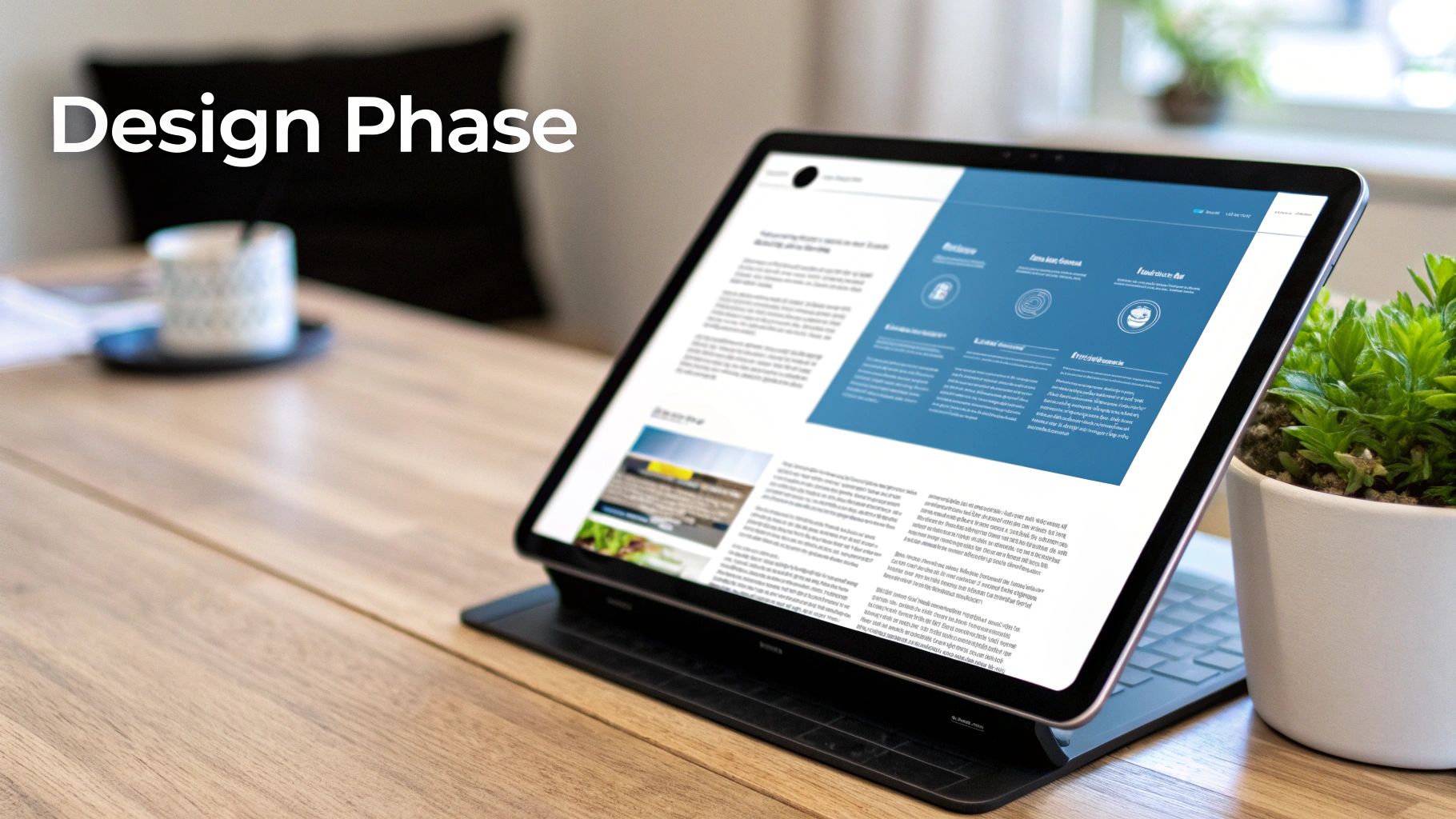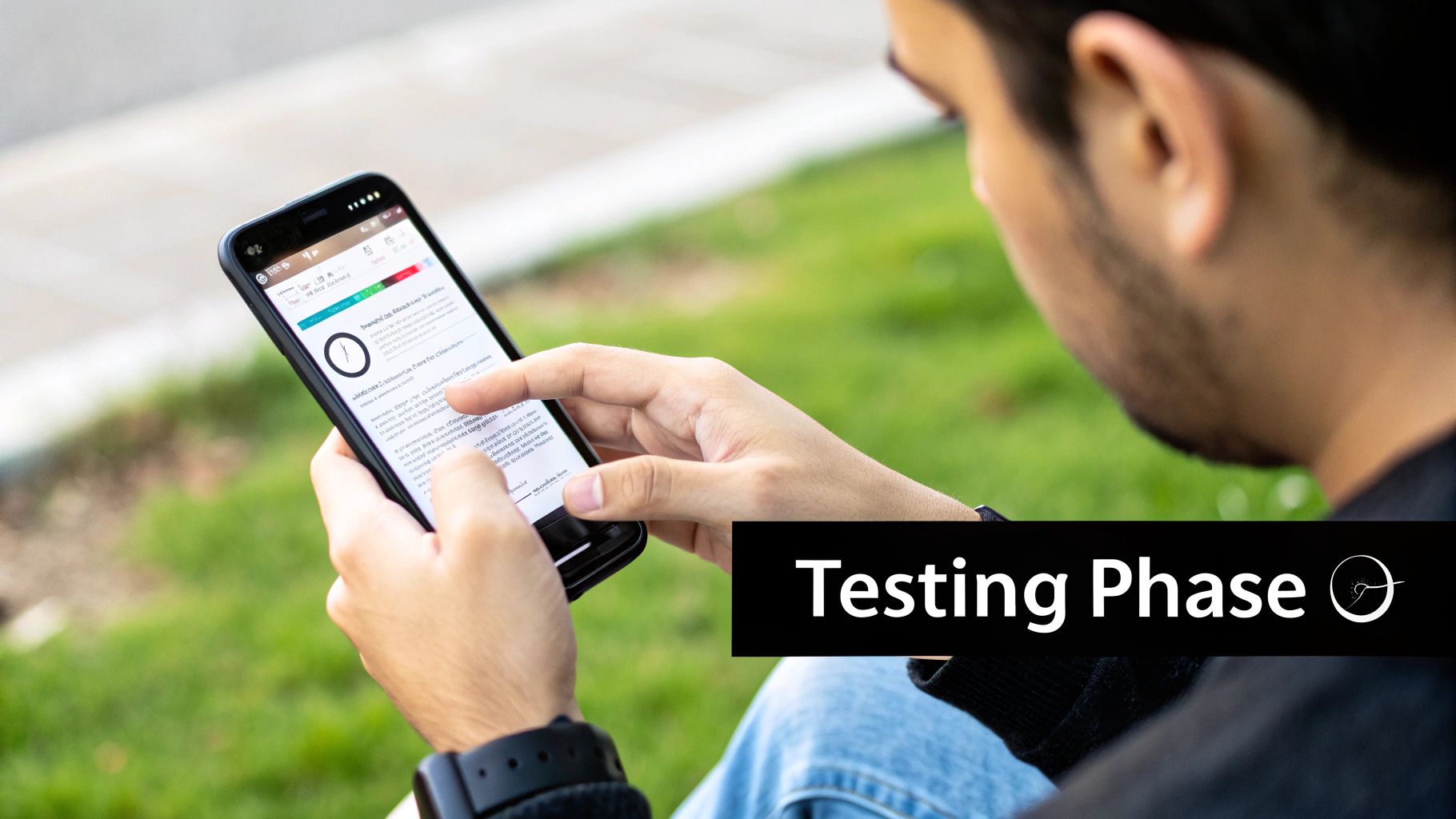The Complete Guide to Mobile App Development Lifecycle: From Concept to Launch
How to Fix WordPress Login Problems
Understanding the Mobile App Development Lifecycle
Mobile app development follows a structured process that turns ideas into successful applications. In 2023, the app industry is expected to generate $201 billion in revenue, highlighting how crucial proper development practices have become. Learn more about industry statistics.
Key Stages of the Mobile App Development Lifecycle
The development process consists of several key phases that help teams create quality apps efficiently:
Ideation and Conceptualization Teams brainstorm and develop initial app concepts, identifying core features and potential challenges to address.
Design and PlanningThe UX and UI design phase focuses on creating intuitive interfaces that meet user needs and preferences.
Development Developers build the app using appropriate programming languages and frameworks based on the technical requirements.
Testing and Quality Assurance Thorough testing through automated tools and beta testing helps identify and fix issues before launch.
Deployment and Launch A well-planned launch strategy ensures the app reaches its target audience effectively.
Maintenance and Updates Ongoing support keeps the app running smoothly with regular updates based on user feedback.
Development Approaches and Best Practices
Many teams combine Waterfall and Agile methodologies to get the best of both approaches. Waterfall provides clear structure while Agile enables quick adjustments based on feedback. This hybrid approach helps deliver quality apps on schedule.
User feedback plays a vital role throughout development. Getting input from actual users helps teams refine features and build stronger connections with their audience. This focus on user needs often determines an app's long-term success.
Taking a systematic approach to mobile app development helps businesses create apps that meet current needs while preparing for future growth. As the mobile app market expands, following proven development practices becomes essential for building successful applications that engage users and achieve business goals.
Market Research and Concept Validation
Market research forms the bedrock of successful mobile app development. Going beyond basic research, it helps identify real market gaps and test your concept's potential. Good research reveals user needs, examines competitors, and refines app ideas based on actual data.
Understanding User Needs
Start by getting to know your target users. What challenges do they face? Which solutions are they currently using, and what's missing from those options? Collect meaningful feedback through:
- User surveys
- Focus group discussions
- Analysis of competitor app reviews
For instance, when building a fitness app, understanding how users want to track specific metrics or connect with wearables will guide key development decisions.
Analyzing the Competition
Studying existing apps in your space reveals crucial insights. Examine:
- Current feature offerings
- Strong and weak points
- User sentiment and reviews
This analysis helps spot untapped opportunities and define your unique selling proposition (USP) - whether that's new features, better usability, or serving a specific user segment better. You might be interested in: How to master software project risk management.
Validating Your Concept

Testing your app idea against real market needs goes beyond asking if people like it. Focus on whether they would actually use and pay for it. Create a Minimum Viable Product (MVP) with core features to gather early user feedback.
Study successful apps to understand what works well and find ways to improve upon existing solutions. Build detailed user profiles covering age groups, interests, and tech comfort levels. For example, if many users prefer simple interfaces, this should shape your design choices. Discover more insights about mobile app development lifecycle.
Combining Quantitative and Qualitative Data
Mix both types of data for complete insights:
- Quantitative data: Download numbers, usage stats, revenue figures
- Qualitative data: User feedback, reviews, survey responses
This balanced approach reveals both what users do and why they do it. By examining both metrics and motivations, you can make smart choices that lead to an app people truly want to use. Focus on solving real problems while meeting user expectations from day one.
Planning and Design Phase
The planning and design phase is the bedrock of successful mobile app development. During this stage, teams convert validated concepts into detailed plans and specifications. A strong planning phase creates a clear development roadmap while giving concrete shape to abstract ideas.
Crafting Technical Specifications
Technical specifications serve as the foundation for aligning development with strategic goals. These documents outline the app's architecture, define user stories, establish software requirements, and set quality standards. Creating detailed wireframes early helps visualize the user experience and ensures all stakeholders share the same vision.
User Experience Design
Moving from wireframes to polished interfaces requires balancing aesthetics with usability and technical feasibility. Effective UX design focuses on intuitive layouts, smooth navigation, and visual appeal to enable effortless user interactions. Studies show that apps prioritizing UX design achieve better user retention.
Choosing the Right Technology Stack
Selecting the right technology stack shapes an app's capabilities, scalability and maintenance needs. Teams must evaluate native, hybrid, or cross-platform approaches based on project requirements and target users. Technology choices should match both app objectives and team expertise.
For context, complex apps like Instagram typically need 6 to 12 months of development time, while simpler apps like Tinder can be built in 3 to 5 months. This timing variation highlights why detailed planning and scheduling matter for handling design iterations and unexpected challenges. Learn more about mobile app development timelines.
Project Timelines and Scalability
Setting realistic project timelines helps manage budget constraints and deadlines effectively. This includes defining key milestones and allowing buffer time for technical hurdles. Planning for growth ensures the app can handle increasing user demands while maintaining performance. Read our guide on How to master software development cost estimation.
Managing Stakeholder Expectations
Clear communication with stakeholders is essential throughout planning and design. Regular updates keep everyone informed and aligned. Building flexibility and scalability into the design meets current needs while preparing for future growth in the competitive app market.
A thorough planning and design phase creates a strong foundation for the rest of mobile app development, helping teams build apps that work well and deliver real value to users and businesses.

Development and Testing Strategies
During this critical stage of mobile app development, the app starts taking shape through coding, component integration, and thorough testing. Getting the development and testing approach right is key to creating an app that works well and delivers a great user experience.
Implementing Agile Methodologies
Many development teams choose Agile methods because they allow for flexibility and quick adjustments. The focus on teamwork, regular feedback, and short development cycles helps teams adapt to changing needs and user input. This results in an app that better matches what users actually want.
Continuous Integration and Automated Testing
When teams use Continuous Integration (CI), they regularly combine their code changes into a shared repository. Automated systems then check this combined code for problems. Including automated testing as part of CI helps catch issues early and makes testing more efficient. This prevents small problems from becoming big headaches later.
Quality Assurance and Testing Types
A solid quality assurance process includes several key testing methods:
- Unit Testing: Checking individual code components
- Integration Testing: Making sure different parts work together
- System Testing: Testing the complete app
- User Acceptance Testing: Getting feedback from real users
This thorough testing helps ensure the app meets quality standards and user needs.
Balancing Technical Debt and Feature Development
Technical debt happens when teams choose quick fixes over better long-term solutions. While some technical debt is normal, it needs careful management. Teams should plan time for both new features and code improvements to keep the app running smoothly.
Managing Dependencies and Performance
Keeping external libraries up-to-date and handling version conflicts is essential for preventing integration issues. Teams also need to optimize code, images, and network requests for smooth performance across devices. Development timelines vary based on complexity - simple apps take 2-4 months, while complex apps need 9+ months or more. More timeline details are available here.
Resolving Development Bottlenecks
Teams need to spot and fix development slowdowns quickly. Common issues include unclear requirements, poor communication, and resource shortages. Regular check-ins, clear task assignments, and smart resource planning help keep projects moving forward. This active approach, combined with ongoing monitoring and feedback, helps teams deliver quality apps on schedule.
Launch and Deployment Essentials
Launching a mobile app requires strategic planning beyond just submitting it to app stores. It involves methodically introducing your product to the market, setting up robust infrastructure, and actively engaging with user feedback. This phase is critical for transforming your completed app into a thriving product.
App Store Optimization (ASO) for Discoverability
ASO is vital for attracting organic downloads by connecting with your target users. Key ASO elements include:
- Keyword Research: Finding relevant search terms your potential users enter when looking for similar apps
- Optimized App Title and Description: Naturally incorporating keywords to improve search visibility
- High-Quality Screenshots and Videos: Creating clear, engaging visuals that highlight key features
- Localization: Adapting store listings for different languages and regions to reach more users
By focusing on these ASO elements, you increase the chances of users discovering your app naturally, leading to more downloads and engagement.
Preparing Your Infrastructure for Real-World Usage
When real users start using your app, you need infrastructure that can handle unpredictable usage patterns. Essential preparations include:
- Scalable Servers: Implementing cloud servers that automatically adjust capacity based on demand to prevent outages
- Load Testing: Running real-world usage simulations to find and fix performance bottlenecks
- Database Optimization: Configuring databases to efficiently process large data volumes and complex queries
For instance, if your marketing campaign brings a sudden influx of users, proper infrastructure scaling ensures everyone has a smooth experience. Learn more in our article about How to master modern code delivery.
Monitoring, Feedback, and Iteration
After launch, ongoing monitoring becomes essential through:
- Crash Reporting: Identifying and resolving app crashes to maintain stability
- Performance Monitoring: Tracking issues like slow loading or battery drain
- User Feedback Collection: Gathering reviews and comments to understand user needs
This data provides key insights into user behavior and helps guide future updates. Quick responses to feedback also show users you're committed to improving their experience.
Managing the Critical First Weeks
The initial post-launch period requires extra attention. Focus on:
- Closely Monitor Performance: Track key metrics to catch potential issues early
- Respond Quickly to Issues: Fix bugs and address user complaints without delay
- Scale Resources as Needed: Adjust infrastructure based on actual usage patterns
This approach helps handle unexpected challenges and maintains app performance as user numbers grow. Following these strategies makes app launching a planned, successful milestone rather than a stressful event.

Post-Launch Maintenance and Evolution

The launch of your mobile app marks an important milestone, but it's only the beginning. Ongoing maintenance and growth are essential for staying competitive. Success requires careful monitoring, user feedback, and strategic updates.
Monitoring App Performance and User Behavior
Keep a close eye on key performance indicators (KPIs) after launch. These metrics show how people use your app and highlight areas that need improvement. Important metrics to track include:
- Crash reports: Quick fixes for app crashes help maintain stability and prevent negative reviews
- Load times: Monitor and optimize speed to keep users happy
- User engagement: Track daily/monthly active users, session length, and feature usage to understand user preferences
- In-app analytics: Tools like Google Analytics for Firebase or Mixpanel provide detailed insights into user actions
This data guides smart decisions about future updates.
Gathering and Implementing User Feedback
Pay attention to what users say about your app. Reviews, feedback forms, and social media comments reveal what works well and what needs fixing.
When users repeatedly ask for specific features, adding them in updates can boost satisfaction. Handle negative feedback professionally and show users their input matters.
Planning and Implementing Updates
Regular updates keep your app fresh and competitive. Focus updates on:
- User requests: Fix reported bugs and add requested features
- Market changes: Keep up with new user needs and tech advances
- Business goals: Add features that support your core purpose
Create an update schedule that brings new features while keeping the app stable. Test thoroughly before each release.
Managing Technical Debt and Long-Term Sustainability
Deal with technical issues early to prevent future problems. Left unchecked, technical debt leads to slower performance, longer development times, and security risks. Set aside time to improve code, strengthen architecture, and fix underlying problems to keep your app running smoothly.
Adapting to Market Changes
The app market never stands still. New technologies appear, user preferences change, and competition grows. Stay relevant by watching market trends and updating your app accordingly:
- Expand platforms: Consider adding support for new operating systems or devices
- Add connections: Link with other useful apps and services
- Update design: Keep the interface fresh and modern
By staying flexible and growing with the market, your app can maintain its edge and keep users engaged for the long term.
Ready to improve your mobile app? Hyathi Technologies provides expert guidance throughout your app's lifecycle. Contact us to learn how we can help your app succeed.